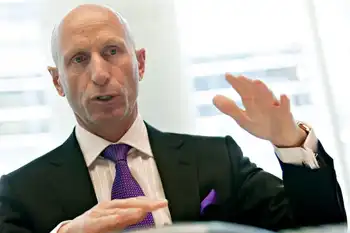Renewables Surpass Coal in India's Energy Capacity Shift

Arc Flash Training CSA Z462 - Electrical Safety Essentials
Our customized live online or in‑person group training can be delivered to your staff at your location.

- Live Online
- 6 hours Instructor-led
- Group Training Available
India Renewable Energy Surge 2024 signals coal's decline as solar and wind capacity soar, aided by policy incentives, grid upgrades, energy storage, and falling costs, accelerating decarbonization and clean power growth.
Key Points
Q1 2024 saw renewables outpace coal in new capacity, led by cheaper solar, wind, policy support, and storage.
✅ 71.5% of new Q1 capacity came from renewables
✅ Solar and wind expand on falling costs and faster permitting
✅ Grid integration needs storage, skills, and just transition
In a landmark shift for the world's second-most populous nation, coal has finally been dethroned as the king of India's energy supply. The first quarter of 2024 saw a historic surge in renewable energy capacity, particularly on-grid solar development across states, pushing its share of power generation past 71.5%. This remarkable feat marks a turning point in India's journey towards a cleaner and more sustainable energy future.
For decades, coal has been the backbone of India's power sector, fueling rapid economic growth but also leading to concerning levels of air pollution. However, a confluence of factors has driven this dramatic shift, even as coal generation surges create short-term fluctuations in the mix. Firstly, the cost of solar and wind power has plummeted in recent years, making them increasingly competitive with coal. Secondly, the Indian government has set ambitious renewable energy targets, aiming for 50% of cumulative power generation capacity from non-fossil fuel sources by 2030. Thirdly, growing public awareness about the environmental impact of coal has spurred a demand for cleaner alternatives.
This surge in renewables is not just about replacing coal. The first quarter of 2024 witnessed a record-breaking addition of 13,669 megawatts (MW) of power generation capacity, with renewables accounting for a staggering 71.5% of that figure, aligning with 30% global renewable electricity milestones seen worldwide. This rapid expansion is driven by factors like falling equipment costs, streamlined permitting processes, and attractive government incentives. Solar and wind energy are leading the charge, and in other major markets renewables are projected to reach one-fourth of U.S. generation in the near term, with large-scale solar farms and wind turbine installations dotting the Indian landscape.
The transition away from coal presents both opportunities and challenges. On the positive side, cleaner air will lead to significant health benefits for millions of Indians. Additionally, India can establish itself as a global leader in the renewable energy sector, attracting investments and creating new jobs, echoing how China's solar PV expansion reshaped markets in the previous decade. However, challenges remain. Integrating such a large amount of variable renewable energy sources like solar and wind into the grid requires robust energy storage solutions. Furthermore, millions of jobs in the coal sector need to be transitioned to new opportunities in the green economy.
Despite these challenges, India's move towards renewables is a significant development with global implications, as U.S. renewable electricity surpassed coal in 2022, underscoring broader momentum. It demonstrates the growing viability of clean energy solutions and paves the way for other developing nations to follow suit. India's success story can inspire a global shift towards a more sustainable energy future, one powered by the sun, wind, and other renewable resources.
Looking ahead, continued government support, technological advancements, and innovative financing mechanisms will be crucial for sustaining India's renewable energy momentum. The future of India's energy sector is undoubtedly bright, fueled by the clean and abundant power of the sun and the wind, as wind and solar surpassed coal in the U.S. in recent comparisons. The world will be watching closely to see if India can successfully navigate this energy transition, setting an example for other nations struggling to balance development with environmental responsibility.











